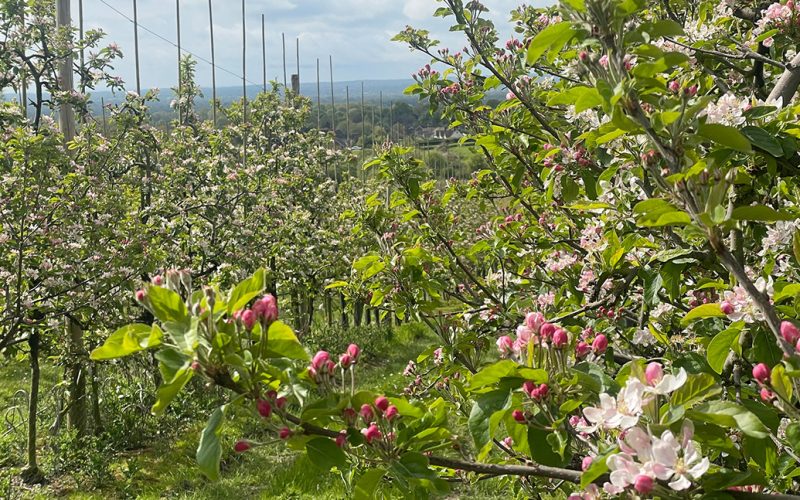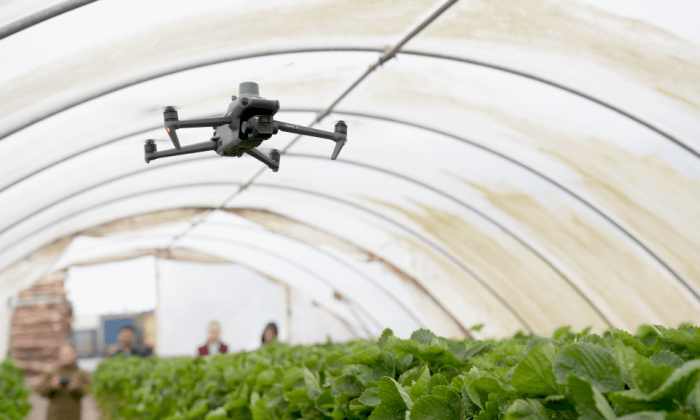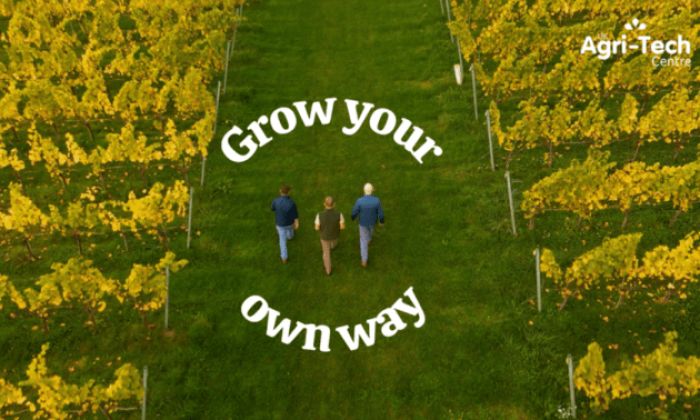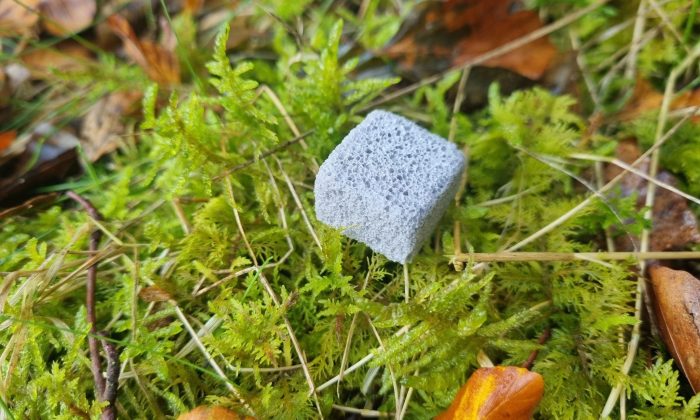Apple scab, a fungal disease that can devastate apple crops, has long been a challenge to British fruit growers. Traditional methods of control have relied on plant protection products (PPPs), but with stricter regulations phasing out these chemical treatments, growers are facing a serious challenge. The UK Agri-Tech Centre, together with Kent’s Rumwood Green Farm and Landseer Ltd., has been testing a new approach that combines biostimulants with cutting-edge hyperspectral imaging to spot disease before it spreads.
The project, Apple Orchard Health: Evaluating Hyperspectral Imagery for Disease Detection and Biostimulant Efficacy, is funded by the Department for Environment, Food and Rural Affairs (DEFRA) and UKRI Transforming Food Production Challenge.
Phasing out traditional PPPs
PPPs have been central to fighting apple scab in the UK, yet growers are still seeing crop losses of 10-12% even with these protections in place. If PPPs were fully withdrawn, experts predict losses could reach up to 70-80%, posing a huge threat to apple production in the UK.
A promising solution may lie in biostimulants, natural substances that enhance a plant’s own defences. When timed correctly, biostimulants can boost resilience, preventing disease rather than simply treating it. Biostimulants serve as preventative measures rather than curative, necessitating timely application before visible disease symptoms emerge.
The project aim was to address the challenge of evaluating the effectiveness of biostimulants and timing their usage, by utilising advanced technologies such as hyperspectral cameras and drones.
The role of hyperspectral sensors
Hyperspectral sensors can capture a broad range of light frequencies, revealing unique “spectral fingerprints” for each material or disease that would be invisible to the human eye.
For apple scab, this technology could help detect signs of infection at the earliest stages, long before symptoms are visible on the surface. This method can serve as an early warning system, helping prevent disease spread, enhancing crop yield and operational efficiency and reducing reliance on traditional PPPs.
Eliot Dixon, Head of Robotics and AI at the UK Agri-Tech Centre, said:
“This was a fast-paced proof of concept project designed to provide evidence for both the efficacy of biostimulant in apple scab control, but also in spectral imaging as a method for detecting apple scab.
For the UK Agri-Tech Centre, this project highlights how our spectral imaging capabilities can be used in product development for both remote sensing and plant protection products. We are very pleased to have successfully shown how lab-based spectral imaging can be successfully transferred to a commercial farm.”
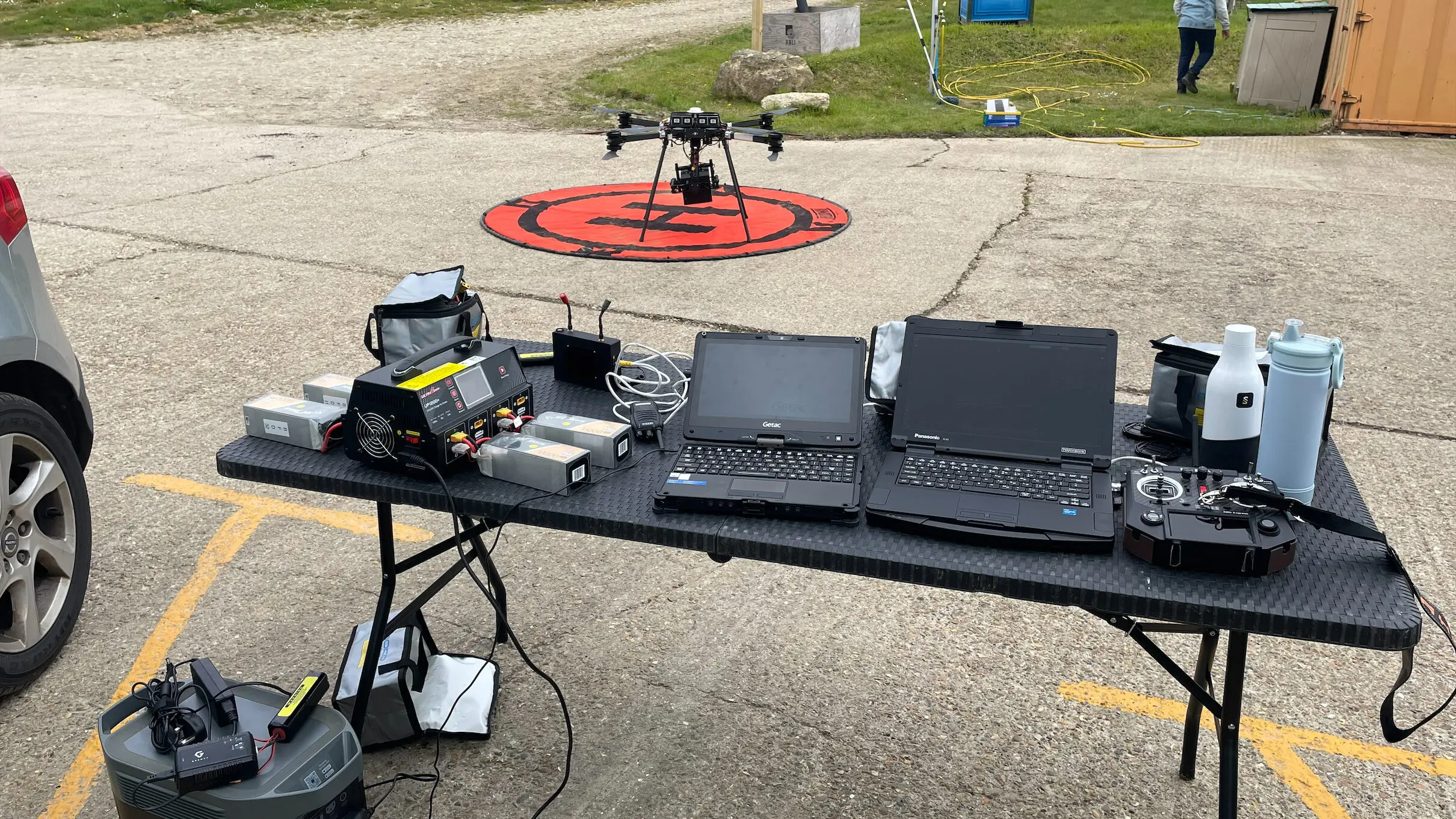
Field trials
Michael Parker, Coldstore and Compliance Manager at Rumwood Green Farm, spoke about the challenges of bringing this technology out of the lab and into the orchard:
“This trial has been very challenging to reproduce results in the field similar to previous in-lab testing of detecting early signs of scab using specific wavelengths. Despite the challenges, we are a step closer towards early scab detection using the hyperspectral camera.
The positive results shown of the biostimulant used will hopefully encourage more growers to use biostimulants as part of their scab control, not only relying on conventional pesticide programs.”
While replicating lab conditions in an open field can be challenging, this trial yielded promising results. Not only did it demonstrate the potential for hyperspectral imaging to detect early-stage scab, but it also validated the role of biostimulants in an integrated pest management system. This could lead to fewer chemical applications, healthier crops and a more sustainable approach to disease control.
The future of apple orchard health
Looking ahead, the project aims to develop an affordable, user-friendly hyperspectral camera for growers. Such a device could function as an “early warning system” for apple scab, allowing farmers to apply biostimulants at the perfect time, prevent disease spread, boost yields and reduce reliance on traditional PPPs. Stephen Tully, Director at Landseer, highlighted the need for this type of innovation.
“With disease control becoming increasingly challenging due to changes in plant protection regulations and unpredictable weather, this project aimed to validate the efficacy of biostimulants to support their routine use and investigate the feasibility of an affordable early detection system for apple scab.”
“This feasibility study has delivered encouraging results, demonstrating the effectiveness of biostimulants for integration into disease management programs and providing promising results for the development of an affordable early warning system for apple scab.”
Landseer Ltd. will be showcasing their trial results at the National Fruit Show on 6 November at the Kent Showground. For those interested in the latest in disease detection and sustainable agriculture, be sure to visit them at stand M77 to see the future of crop protection firsthand.
If you are interested in learning about Apple Scab, or the Apple Orchard Health project. Get in touch via [email protected]
